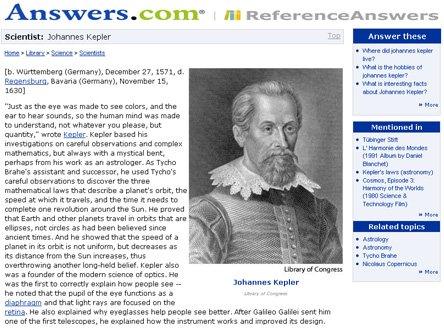In 1601 Johannes Kepler became the imperial mathematician to Rudolf II (emperor of the Holy Roman Empire), succeeding Tycho Brahe. Kepler supported the heliocentric theory by Nicolas Copernicus, defending it in his first major work, Mysterium Cosmographicum (1596).
Using Brahe’s data, between 1609 and 1619 Kepler developed his three laws of planetary motion in Astronomia Nova and Harmonices Mundi. Thanks in part to a telescope he received from Galileo (they knew each other through correspondence only), Kepler also advanced the science of optics. His achievements in astronomy and mathematics shaped our current understanding of the solar system.
Kepler wrote a story, “Somnium,” that wasn’t published until after his death. In the story a man travels to the moon in a dream. Kepler accurately described the surface of the moon as dust and rocks.
Read more at…

No Comment
You can post first response comment.